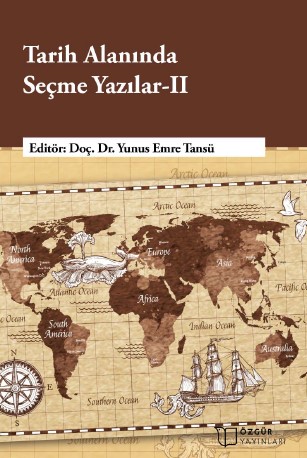Mütareke Döneminde Batum
Batum during the Armistice Period
Author(s): Selçuk Ural, Mehtap Çınar
Subject(s): Military history, Political history, 19th Century, Pre-WW I & WW I (1900 -1919), The Ottoman Empire
Published by: Özgür Yayın Dağıtım Ltd. Şti.
Keywords: Batum; Armistice period;
Summary/Abstract: Batum joining the Ottoman lands during the reign of Mehmet the Conqueror was seized by Tsarist Russia in the 1877-1878 Ottoman-Russian-War, after four hundred years of Turkish domination. While Batum was occupied for forty years, it was turned into a significant military base in the region. When the First World War broke out, Batum played an important role in the occupation of the Eastern Black Sea Region. The Soviet government that came to power following the Soviet Revolution in 1917 decided to withdraw from the war. The Treaty of Brest-Litovsk was signed on March 3, 1918 between Russia and the allied states. The treaty was of a nature to change the military and political situation of Elviye-i Selase, where Batum was located. The Turkish army took action just as the negotiations were continuing, liberated Batum and putt an end to occupation lasting for forty-year. When the Ottoman Empire was defeated in the war, the future of Batum became a controversial issue due to the fact that the eleventh item of the Mondros Armistice opened the door to the occupation of Batum, Kars and Ardahan. In fact, the British gave priority to the occupation of Batum while they also wanted the evacuation of Elviye-i Selase based on the armistice on November 11, 1918. Therefore, they sent two warships to the port of Batum. Together with Gyumri, Batum was designated as the gathering and evacuation center for the evacuation of Georgia and Azerbaijan. Batum had appropriate conditions for transition to Anatolia in terms of its geography, port, range organization, provision of supplies and seasonal conditions. However, when the British occupied the city on December 24, 1918, the demobilization and evacuation activities of the Turkish army were interrupted. For this reason, the British Occupation Command prevented the transport of heavy weapons and ammunition by forcing the Turkish forces in Batum to use the land route. They seized weapons and ammunition which the troops could not take. Still not feeling content with this, they were going to take the warehouses of the Ottoman forces under control through imprompt methods and distribute them to the Georgian and Armenian forces.
Book: Tarih Alanında Seçme Yazılar- II
- Page Range: 81-103
- Page Count: 23
- Publication Year: 2023
- Language: Turkish
- Content File-PDF

